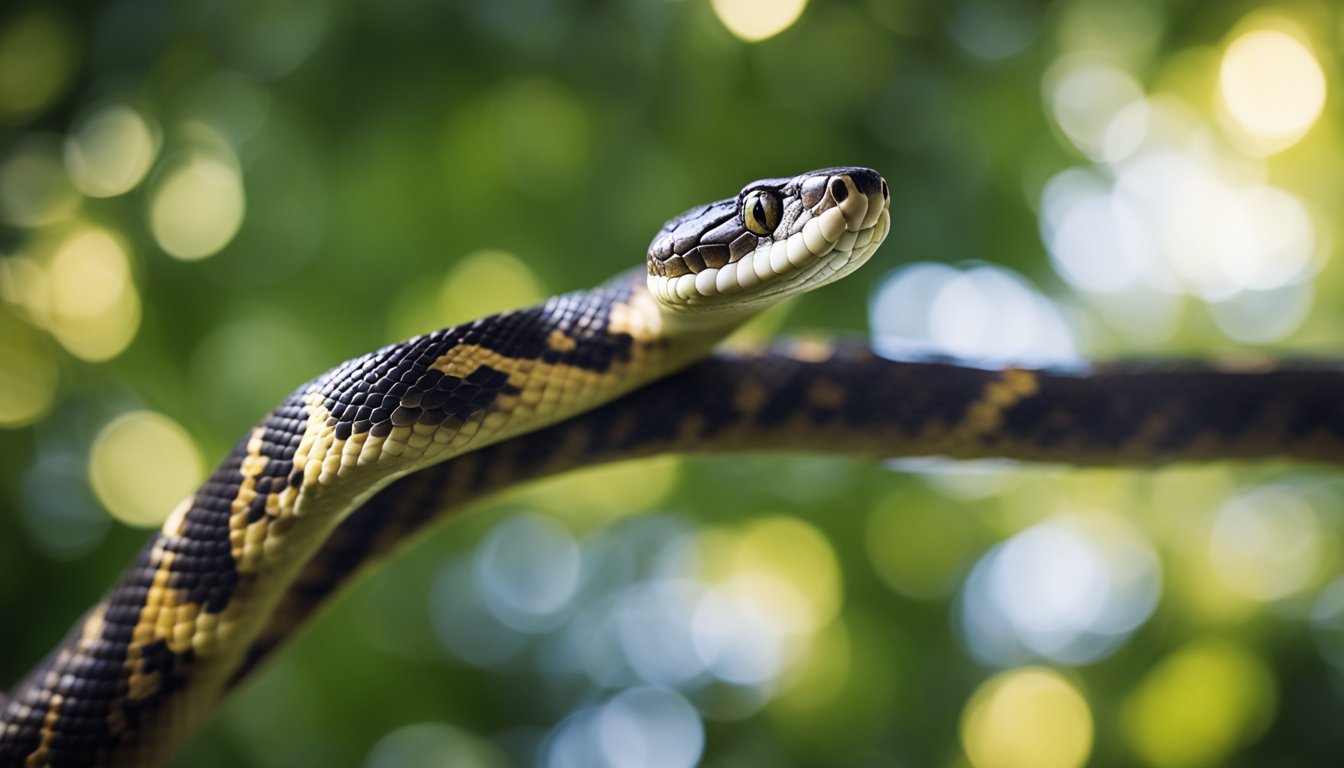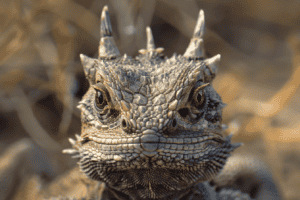Imagine a creature that can regularly wiggle out of its old skin to reveal a shiny new coat beneath—this is the fascinating world of snakes and their shedding process.
Shedding their skin is a natural and vital part of a snake’s growth and health.
As these scaly friends grow, their skin does not stretch like ours does; instead, they must shed their old layer to make way for the new, larger one.
Think of it like outgrowing a favorite jacket; it gets snug with time, and eventually, it’s time for something new that fits just right.

This fantastic wardrobe change, known as ecdysis, is not just about growing larger.
The process also allows snakes to remove parasites and any damaged skin, keeping them healthy and spry.
Young snakes, which are in a period of rapid growth, may shed their skin as often as every few weeks.
In contrast, older snakes may only change their skin a couple of times a year.
When it’s time to say goodbye to the old and hello to the new, snakes initiate this process by rubbing their snout against a rough surface and then wriggling their way out of the old layer, leaving it turned inside out like an old sock.
Have you ever had the itch to slip into something more comfortable? Well, snakes take this to an extreme!
Once they start shedding, they sometimes eat the discarded skin—it’s a snack and a cleanup in one!
The whole spectacle is like a magic trick, with the snake performing a disappearing act, slipping out of its old skin to dazzle onlookers with its fresh, vivid scales.
It’s one of Mother Nature’s most wonderful shows, a true testament to the resilience and adaptability of these incredible reptiles.
Understanding Snake Skin and Its Growth
When you think about snakes, one of their most fascinating features is how their skin grows and changes.
These scaly friends have quite the unique wardrobe cycle that keeps their skin fresh and ready for action!
Layers of Snake Skin
The skin of a snake isn’t just one solid suit; it’s more like a complex layered outfit.
The outermost layer that you see is called the epidermis, and it contains scales that are made from a tough protein known as keratin—the same stuff your fingernails are made from!
Beneath this layer, new skin cells are always at work, preparing for the day they get to be on top.
Snake Growth and Skin Shedding Cycle
Have you ever outgrown a pair of shoes? Snakes can relate—except they outgrow their entire skin!
As they grow in size, especially when they are young and growing fast, their skin doesn’t stretch.
Instead, a new layer forms underneath, and the old one gets the boot.
It’s like if your clothes could just molt away and reveal a brand-new outfit underneath!
The shedding cycle can happen every few weeks for the little ones and just a couple of times a year for the older serpents.
And age isn’t just a number for snakes; it’s a peek into their life story since each shed can signify a growth spurt.
Next time you see a snake, remember that it’s not the size that matters, but the fascinating journey its skin takes as it grows!
The Shedding Process: Ecdysis in Action

When snakes grow out of their skin, it’s like a big wardrobe change for them!
This fascinating outfit switch is known as ecdysis, and it’s essential for their health and growth.
So, let’s follow a snake’s journey as it slips out of its old layer and reveals a shiny new one.
Pre-shedding Signs and Symptoms
Before a snake begins to shed, one can notice some clear giveaways.
Their skin starts to look dull and may take on a bluish tint, while their eyes can appear cloudy or blue too.
This is because a layer of fluid forms between the old skin and the new one, making them look like they’re gazing through frosted glass.
Snakes may find a cozy, hidden spot during this time because their blurry vision makes them feel more vulnerable, so they prefer some peace and quiet.
Stages of the Shedding Cycle
The shedding cycle can be viewed in distinct stages.
Initially, the snake’s integument—that’s a fancy word for skin—prepares to separate from the new layer beneath.
Then comes the spectacle of sloughing. The snake wriggles and rubs against rough surfaces to break the skin around its mouth and nose.
First goes the eye cap, a special scale that protects its eyes, followed by the rest of the skin, which peels away in one impressive piece, like the ultimate full-body glove!
Shedding Skin: The Final Act
The grand finale of the shedding process is a perfect escape act! The old skin, turned inside out, is left behind like a ghostly echo of the snake.
The new layer is more vibrant and snug—just right for a growing snake.
To ensure a successful shed, our scaly friend needs the right conditions: humidity to keep the skin pliable and some rough bits in their environment to help them wriggle free.
If it all goes well, they slither away refreshed and looking their best, ready for the next adventure.
Factors Influencing Shedding

When observing the fascinating process of snakes shedding their skin, several factors come into play that can affect how and when this event occurs.
Environmental Conditions and Their Impact
Imagine you’re wearing a coat that’s a little too tight and you’re trying to move around in different weather conditions.
For snakes, their “coat” is actually their skin, and just like us, they feel the effects of their environment.
The humidity and temperature where a snake lives can play big roles in how effectively they shed their skin.
If they’re slithering out in the wild under the baking sun, they might shed more frequently than a pet snake who lives a cozy life indoors.
In high humidity, a snake’s skin loosens up a bit easier, making the shed a smoother process, just as a splash of water helps a tight ring slide off a finger.
Diet, Health, and Shedding Quality
Now, consider how you feel when you eat healthy foods and drink plenty of water – pretty good, right?
For snakes, their diet and overall health have a huge impact on the quality of their skin and consequently, how well they can shed.
A well-fed snake with access to clean water is like a happy plant soaking up sunlight and good nutrients.
They’re more likely to experience complete and regular sheds.
On the flip side, a snake who’s not feeling too chipper or is missing out on nutritious eats might struggle, leaving patches of old skin behind.
Imagine trying to walk out of a room with your jacket half on and half off; it’s uncomfortable and certainly not the best look.
When Shedding Becomes a Problem

Sometimes, snakes encounter problems when they try to shed their skin.
It’s like if you were trying to wriggle out of a sweater that’s just too tight and it gets stuck!
They may face stubborn shed skin, infections, or even problems with their eye caps.
For our slithery friends, a seamless shed means they’re healthy, but when issues crop up, it can lead to discomfort and even health problems.
Identifying Shedding Issues
Identifying shedding issues in snakes is vital. Imagine wearing a sock on your hand all day; it’s going to feel pretty weird, right?
That’s how a snake can feel when shed skin clings on, especially if the skin around their eyes, known as eye caps, doesn’t come off.
This can lead to something quite serious, like blindness or infections.
They might feel discomfort and pain, and without being able to see clearly, they may have trouble finding their next meal or seeing where they’re going.
Signs that a snake is having troubles can also include skin that looks dry, lacks elasticity, or if they’re trying to shed more frequently than normal.
When bacteria or parasites join the party, it can cause disease and further damage their delicate skin.
Caring for a Snake During Problematic Shedding
When shedding becomes an issue, snake parents need to leap into action.
It’s like if a friend needs help peeling an orange; snakes sometimes need a little assistance too.
Keep an eye on the humidity levels where they live — this can be a big help.
Too dry, and their home is like a desert where the skin doesn’t want to come off smoothly.
Offering a shed box with some moist sphagnum moss can be like giving them their own little spa, making the shedding process easier.
In some cases, like with a pesky rattlesnake, the approach needs to be left to the experts, as they require professional care.
If there’s suspicion of an infection or the skin just won’t come off, a veterinarian should take a look to provide appropriate treatments to ensure the snake returns to health and can shed without a hitch next time.
Frequently Asked Questions

When it comes to snakes shedding their skin, there’s a fascinating world to explore!
The process involves a well-orchestrated sequence of changes, and each snake has its own timing and way of shedding.
Let’s answer some burning questions about this amazing natural occurrence.
What is the process that snakes go through to shed their skin?
Snakes begin the shedding process when their skin becomes too tight and stops accommodating their growing bodies.
First, a new skin layer forms underneath the old one, and the snake produces a fluid that separates these layers.
When it’s time, they rub against rough surfaces to peel the old skin away, often in one complete piece, like pulling off a sock inside out.
How often do snakes typically go through a shedding cycle?
The frequency of a snake’s shedding cycle varies greatly with their age and growth rate.
Young, rapidly growing snakes may shed their skin every few weeks, whereas adult snakes may do so only a few times a year.
As a snake matures, the intervals between sheds will generally become longer.
What are the signs that a snake is getting ready to shed its skin?
Before shedding, snakes show several telltale signs.
Their skin becomes dull and less vibrant, and their eyes may appear blue or cloudy due to the fluid between their old and new skin.
Snakes might also hide more and demonstrate a decrease in appetite as they prepare for the shedding process.
Can you find snakes near the place where they’ve shed their skin, and why?
It’s possible to find snakes near the place they’ve shed because after the process, they often remain in the area to regain their full mobility and vision.
The skin provides clues to their recent presence; however, snakes don’t necessarily stay close for long as they continue with their regular activities.
Is the shedding of skin by snakes a painful experience for them?
Shedding skin isn’t typically a painful experience for snakes. It’s a natural and essential process for growth.
However, if the conditions aren’t just right, such as low humidity or dehydration, shedding can be difficult and stressful, potentially leading to incomplete shedding.
How do environmental conditions affect the way a snake sheds its skin?
Environmental conditions play an important role in the shedding process. Adequate humidity and hydration are crucial for snakes to shed properly.
If the environment is too dry, the old skin might not come off easily, and this can cause problems for the snake, such as retained skin patches or eye caps.









